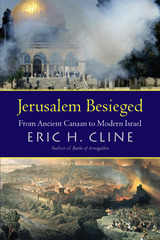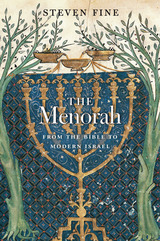
The authors present the first detailed economic analysis of the Palestinian uprising, showing how the unrest has led to a fall in Arab employment in Israel and serious economic loss to the occupied territories with some loss to Israel. They also examine how the uprising has affected Israel's financial standing internationally and the inflow of foreign aid.
Razin and Sadka see promise for Israel's economy in the waves of immigration from the former Soviet Union, despite the current difficulties in absorbing the immigrants; in the coexistence of a flourishing and highly competitive private sector with a relatively large public sector, which is undergoing privatization; and in a tax structure that encourages long-term saving and business growth. By examining the interplay between the exchange rate, interest rates, and monetary and anti-inflation policies, the authors investigate the possibilities for renewed growth and conclude that the future of Israel's economy crucially depends on serious efforts to secure peace in the Middle East.

-Victor Davis Hanson, Stanford University; author of The Other Greeks and Carnage and Culture
"A beautifully lucid presentation of four thousand years of history in a single volume. Cline writes primarily as an archaeologist-avoiding polemic and offering evidence for any religious claims-yet he has also incorporated much journalistic material into this study. Jerusalem Besieged will enlighten anyone interested in the history of military conflict in and around Jerusalem."
-Col. Rose Mary Sheldon, Virginia Military Institute
"This groundbreaking study offers a fascinating synthesis of Jerusalem's military history from its first occupation into the modern era. Cline amply deploys primary source material to investigate assaults on Jerusalem of every sort, starting at the dawn of recorded history. Jerusalem Besieged is invaluable for framing the contemporary situation in the Middle East in the context of a very long and pertinent history."
-Baruch Halpern, Pennsylvania State University
A sweeping history of four thousand years of struggle for control of one city
"[An] absorbing account of archaeological history, from the ancient Israelites' first conquest to today's second intifada. Cline clearly lays out the fascinating history behind the conflicts."
-USA Today
"A pleasure to read, this work makes this important but complicated subject fascinating."
-Jewish Book World
"Jerusalem Besieged is a fascinating account of how and why a baffling array of peoples, ideologies, and religions have fought for some four thousand years over a city without either great wealth, size, or strategic importance. Cline guides us through the baffling, but always bloody, array of Jewish, Roman, Moslem, Crusader, Ottoman, Western, Arab, and Israeli fights for possession of such a symbolic prize in a manner that is both scholarly and engaging."
-Victor Davis Hanson, Stanford University; author of The Other Greeks and Carnage and Culture

The menorah, the seven-branched candelabrum, has traversed millennia as a living symbol of Judaism and the Jewish people. Naturally, it did not pass through the ages unaltered. The Menorah explores the cultural and intellectual history of the Western world’s oldest continuously used religious symbol. This meticulously researched yet deeply personal history explains how the menorah illuminates the great changes and continuities in Jewish culture, from biblical times to modern Israel.
Though the golden seven-branched menorahs of Moses and of the Jerusalem Temple are artifacts lost to history, the best-known menorah image survives on the Arch of Titus in Rome. Commemorating the Roman destruction of Jerusalem in 70 CE, the arch reliefs depict the spoils of the Temple, the menorah chief among them, as they appeared in Titus’s great triumphal parade in 71 CE. Steven Fine recounts how, in 2012, his team discovered the original yellow ochre paint that colored the menorah—an event that inspired his search for the history of this rich symbol from ancient Israel through classical history, the Middle Ages, and on to our own tumultuous times.
Surveying artifacts and literary sources spanning three thousand years—from the Torah and the ruins of Rome to yesterday’s news—Fine presents the menorah as a source of fascination and illumination for Jews, Samaritans, Christians, and even Freemasons. A symbol for the divine, for continuity, emancipation, national liberation, and redemption, the menorah features prominently on Israel’s state seal and continues to inspire and challenge in surprising ways.
READERS
Browse our collection.
PUBLISHERS
See BiblioVault's publisher services.
STUDENT SERVICES
Files for college accessibility offices.
UChicago Accessibility Resources
home | accessibility | search | about | contact us
BiblioVault ® 2001 - 2024
The University of Chicago Press









